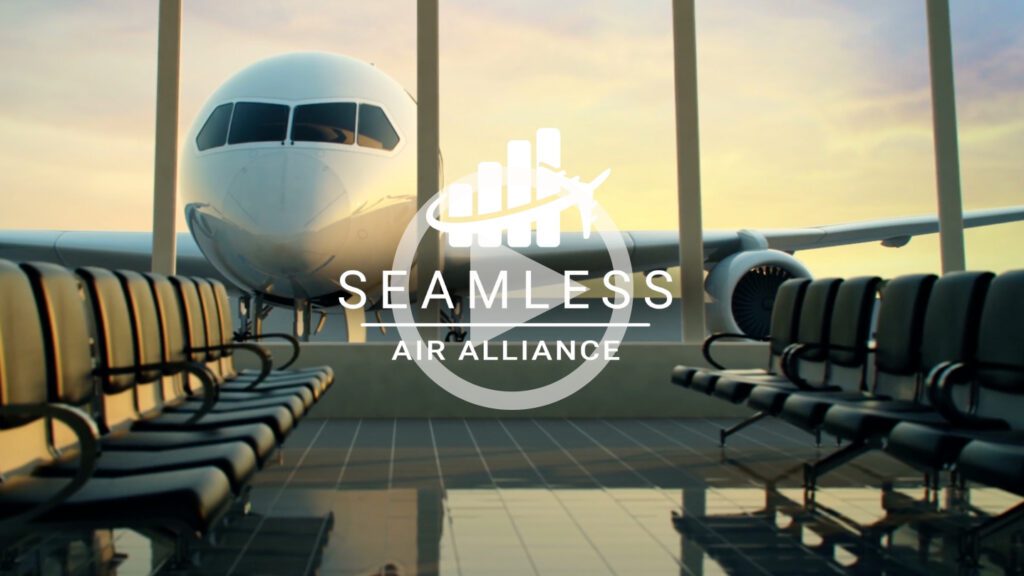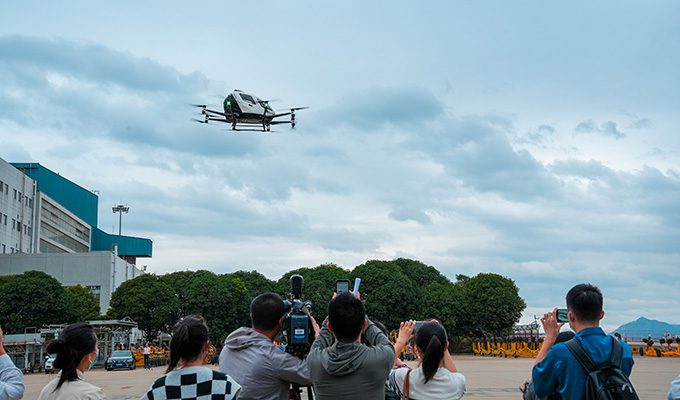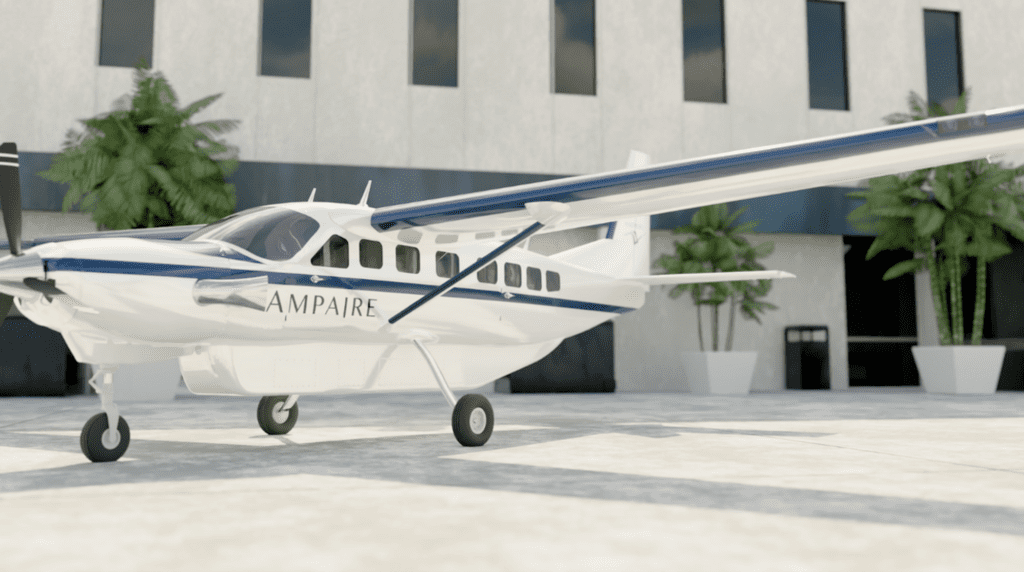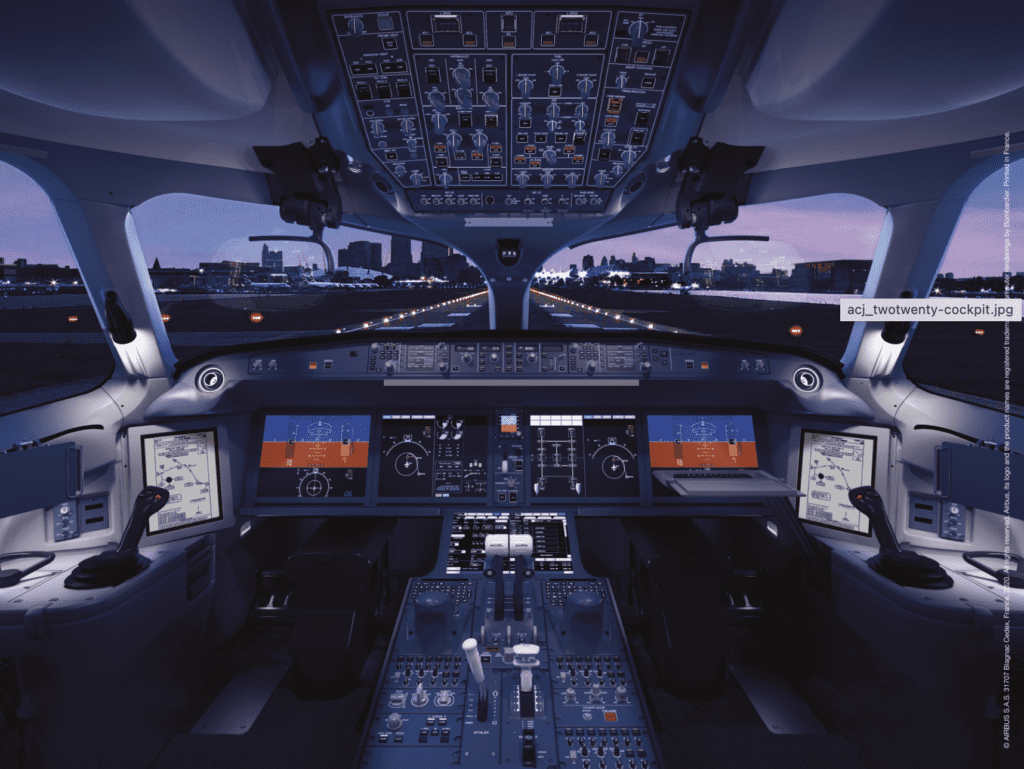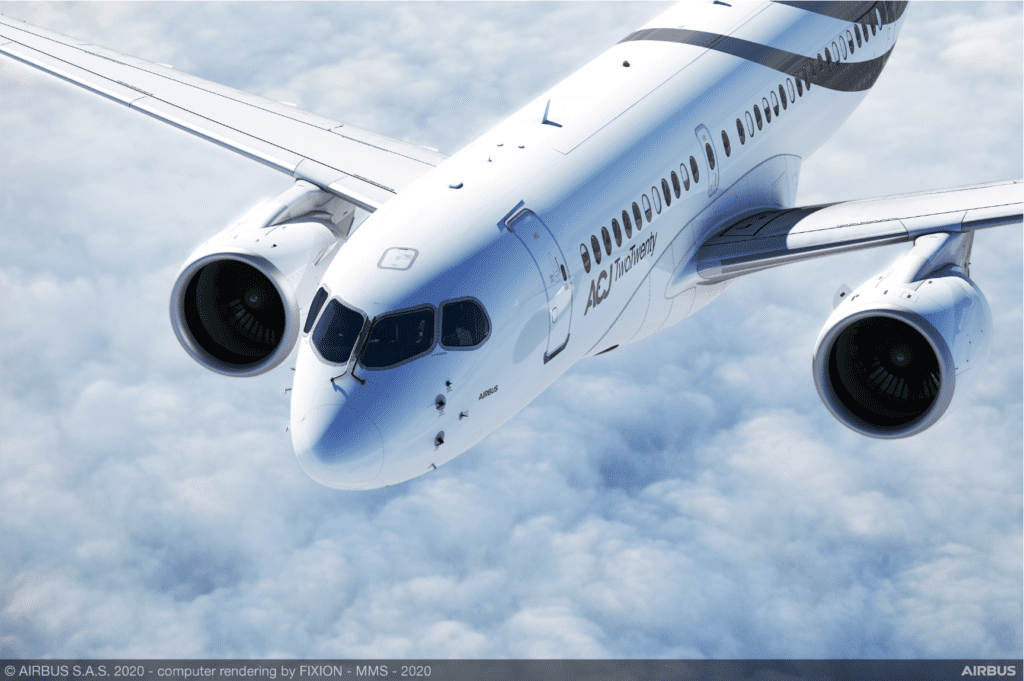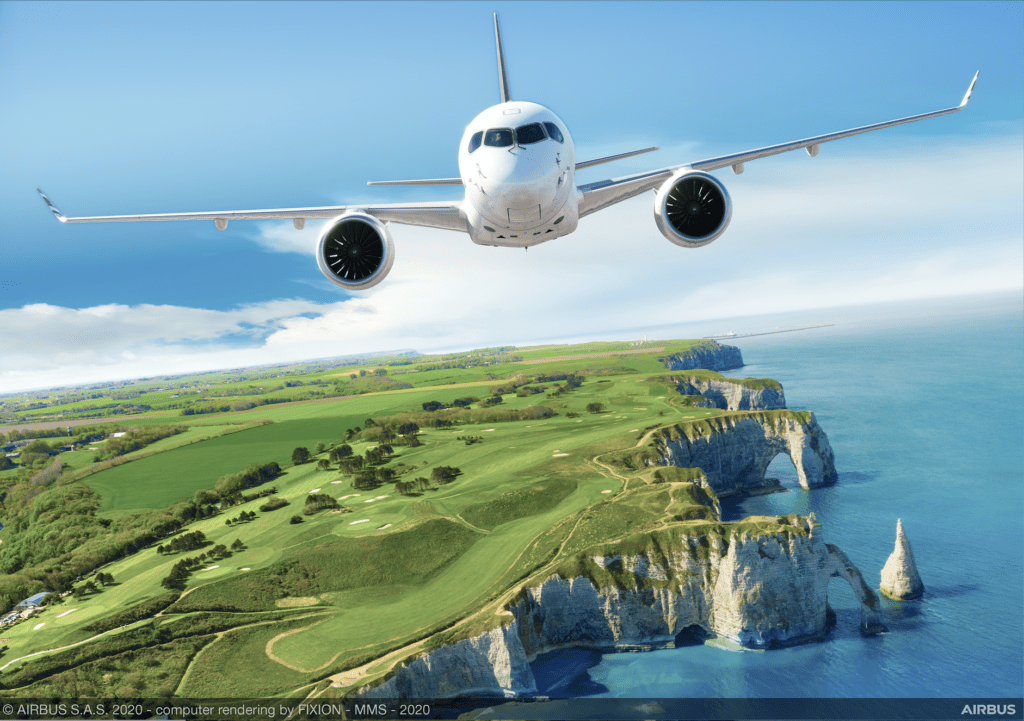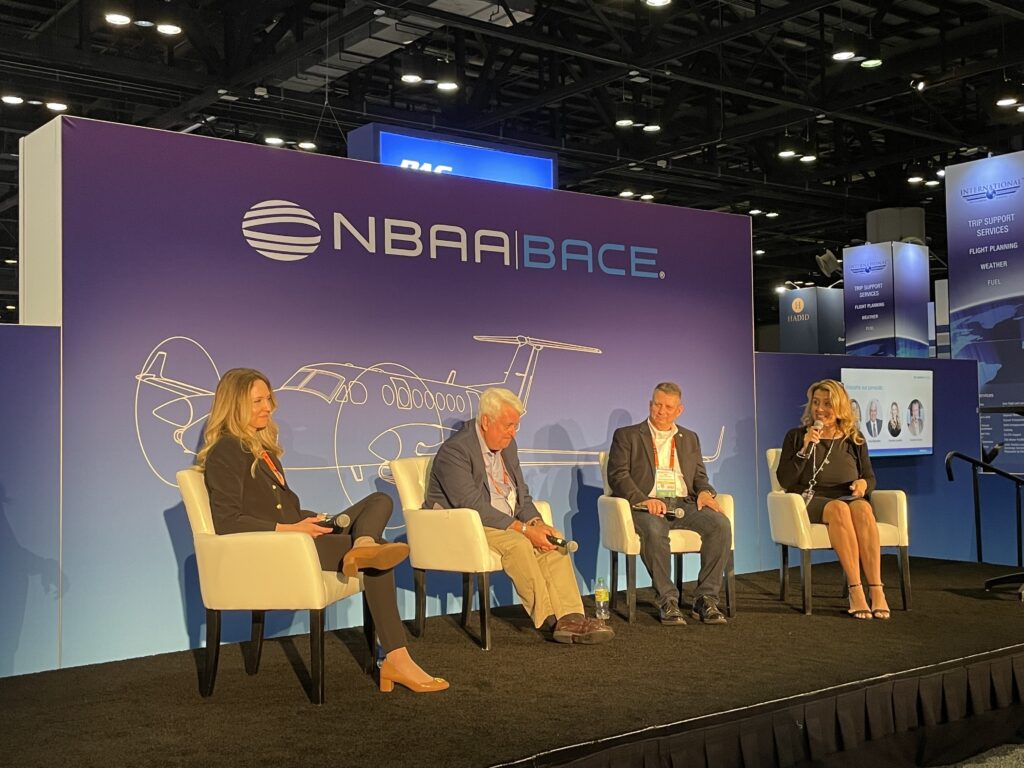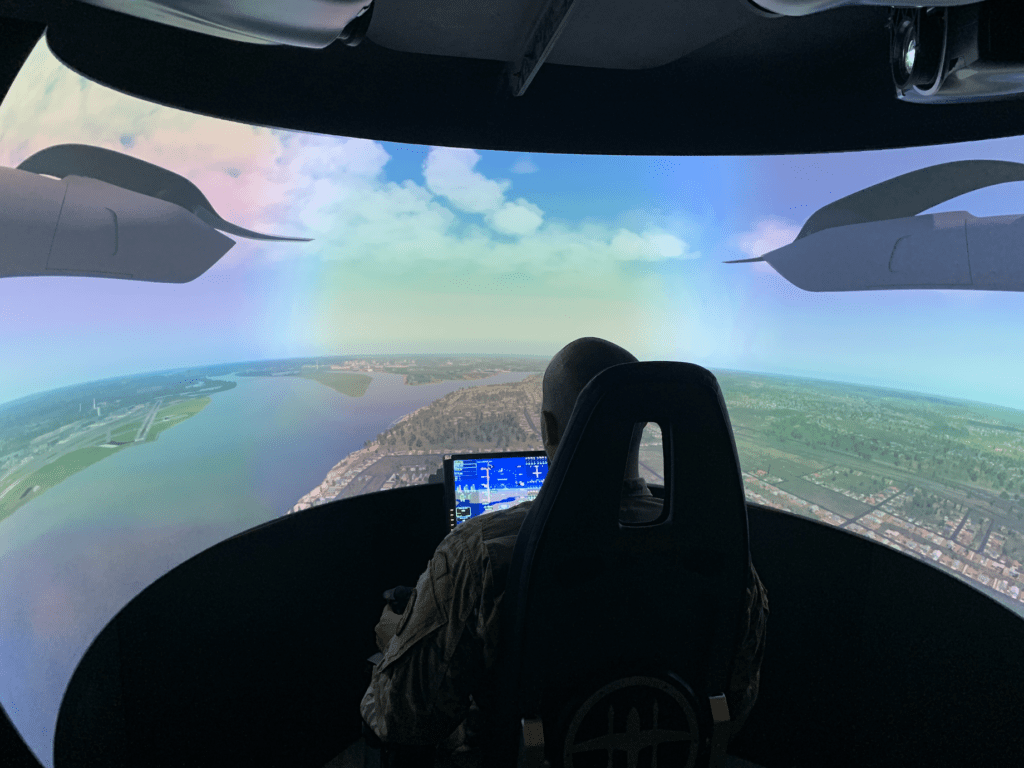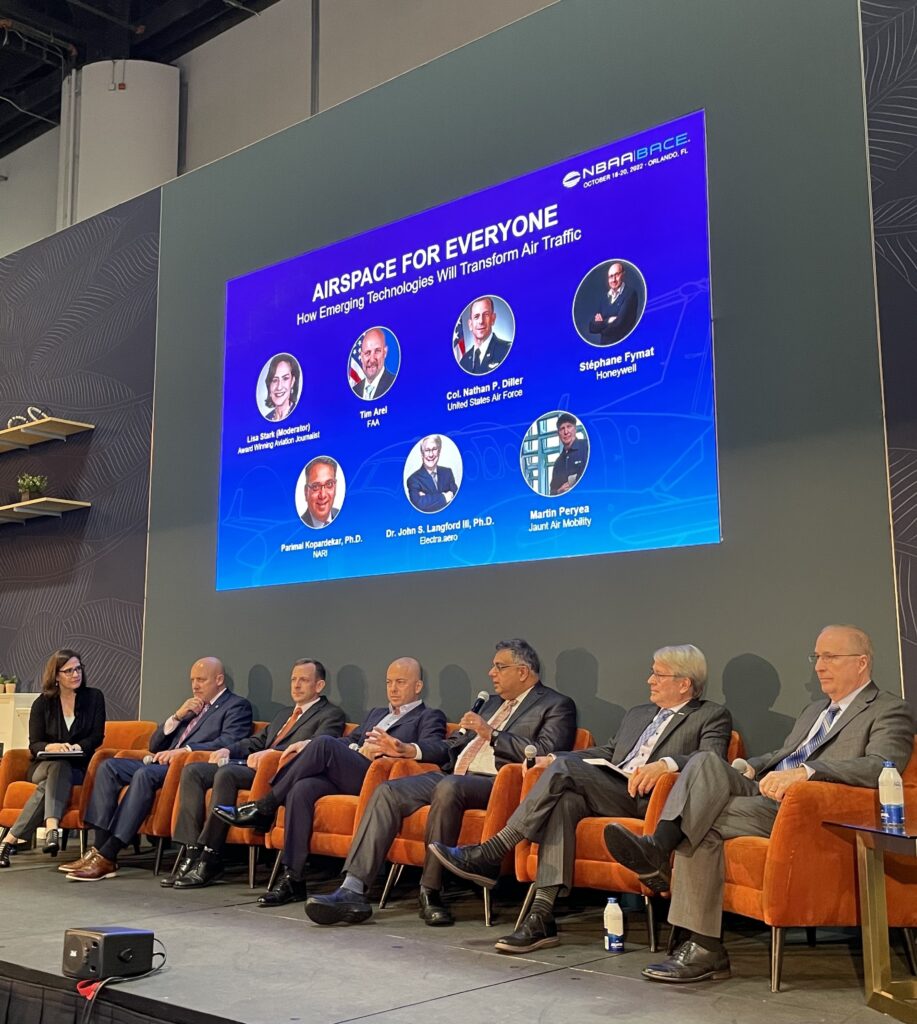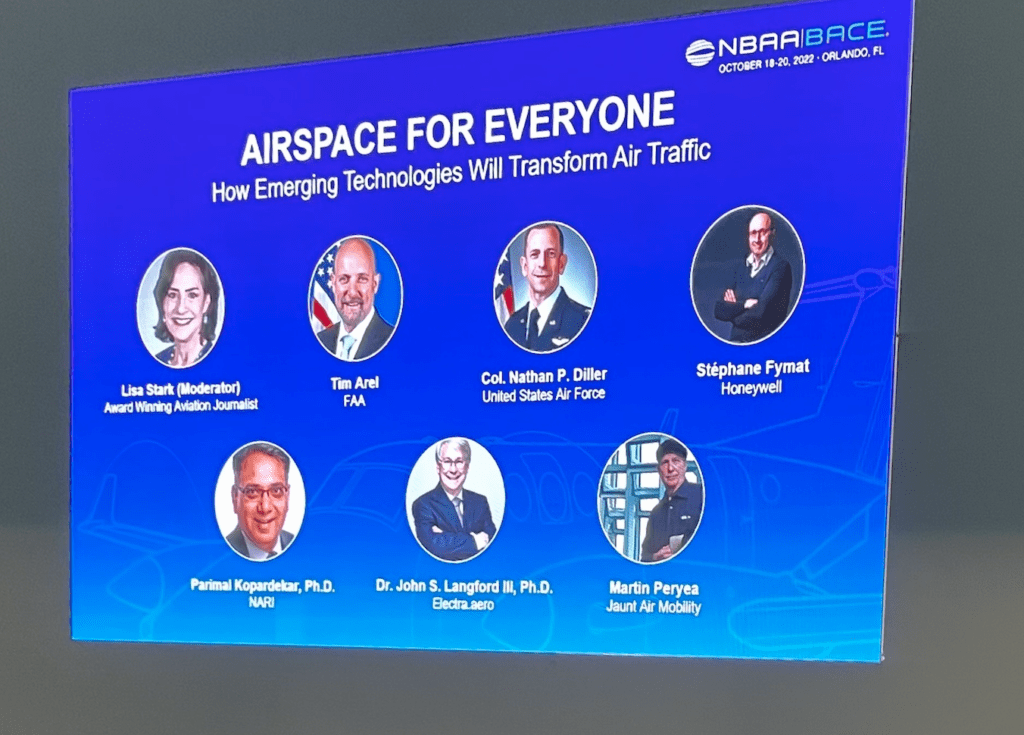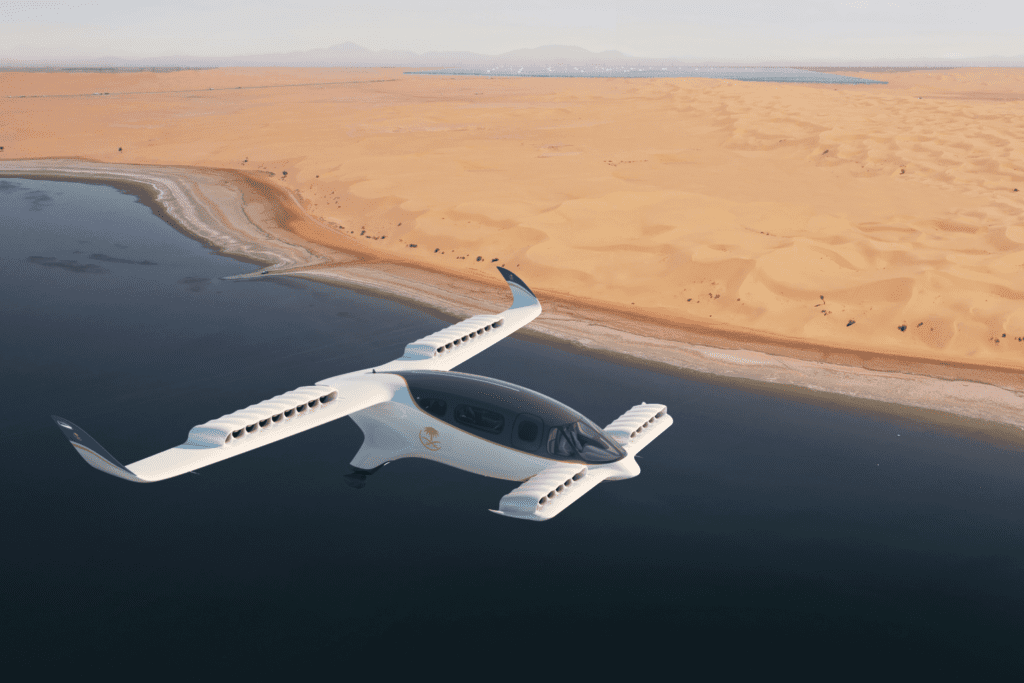Airbus Unveils GeniusLINK Ecosystem at APEX


Airbus announced that the new GeniusLINK in-flight system will now be offered for third-party fleets. GeniusLINK is an on-board open ecosystem that offers a multi-purpose platform for hosting passenger and crew applications. Airbus launched GeniusLINK in conjunction with KID-Systeme, its cabin systems subsidiary. (Photo: Jessica Reed)
LONG BEACH, Calif. — Airbus announced last week at the APEX Expo that the new GeniusLINK in-flight system will now be offered for third-party fleets. The GeniusLINK solution is similar to Airspace Link, a new on-board open ecosystem for commercial aviation, launched by Airbus earlier this year. Both solutions offer a multi-purpose platform with a lot of flexibility that can host passenger and crew applications. Airbus launched GeniusLINK in conjunction with KID-Systeme, its cabin systems subsidiary.
The Airspace Link offers connectivity via air-to-ground and satcom solutions. HBCplus is the high-bandwidth connectivity solution, launched at the same time as Airspace Link. HBCplus will initially encompass Ka-band services, according to the announcement by Airbus in June, and the company plans to include managed service providers in the future that offer Ku-band services as well.
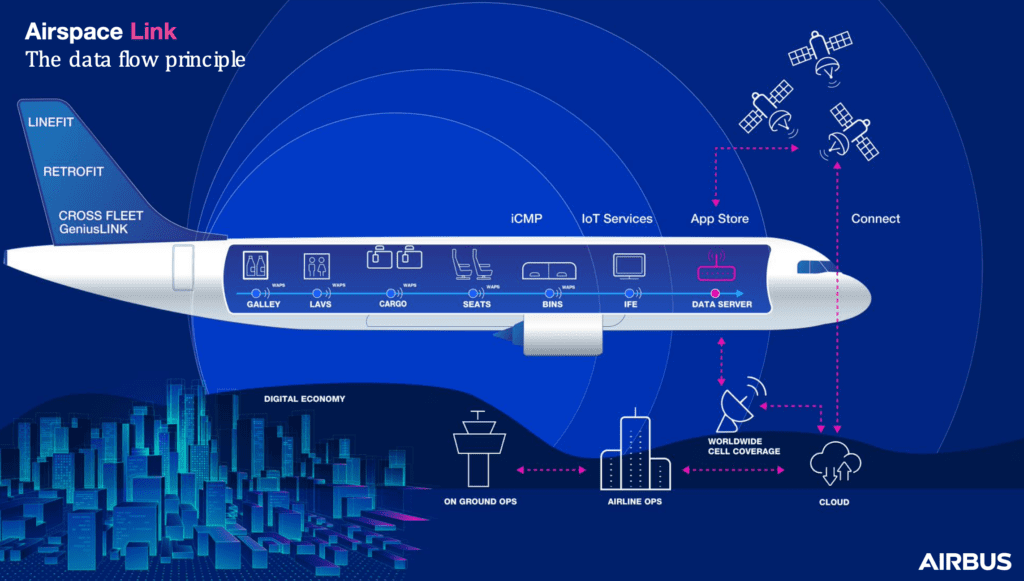
The Airspace Link ecosystem includes four layers: an iCMP (intelligent core management platform), IoT services, an app store, and an agnostic connectivity platform. (Photo: Airbus)
At the recent APEX Expo in Long Beach, Airbus also shared news of a Letter of Agreement signed with SES, a company that provides satellite and ground communications solutions. Airbus plans to add SES to its Airspace Link HBCplus catalog offering for airlines, according to the Letter of Agreement. Once the contract is signed, SES will bring its MEO and GEO satellite network through the Airbus ecosystem for the first time.
Ingo Wuggetzer, Vice President of Cabin Marketing at Airbus, remarked during its press briefing, “Airspace Link is not a platform like others; it is an ecosystem.” The Airspace Link ecosystem offers customers the flexibility to switch from one application or service to another. “It’s the same logic behind the Airspace Link as what is in your smartphone today,” he explained.
“GeniusLINK is the equivalent to the Airspace Link for third-party aircraft,” Wuggetzer said. He also highlighted the agreement with SES, saying that the company offers an “agnostic system.”
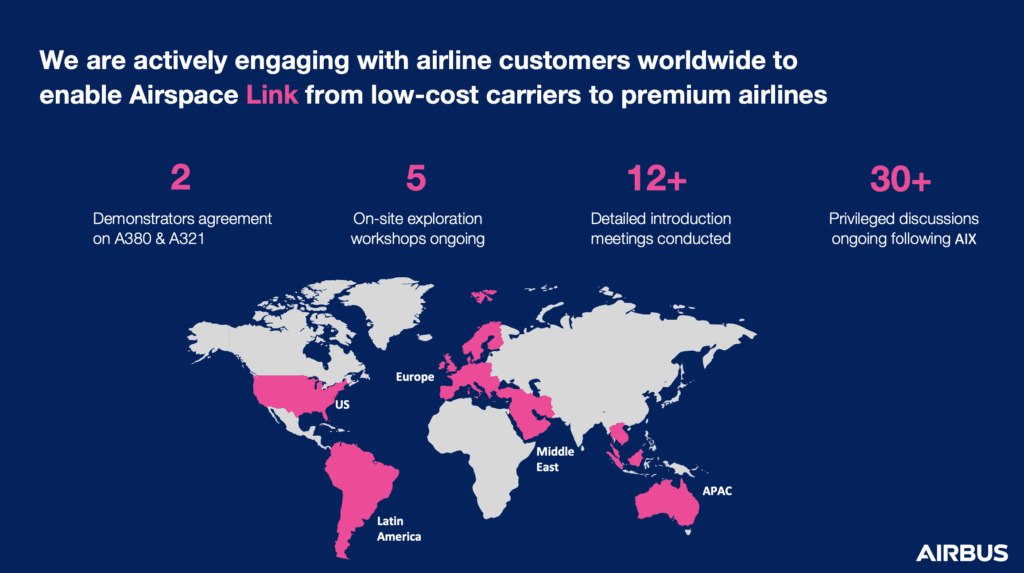
The Airbus team has been in communication with global customers to enable Airspace Link since launching the solution in June 2022. (Photo: Airbus)
Cedric Carsalade, Aircraft Interiors Marketing Director at Airbus, shared during the briefing that Airspace Link enables airlines to understand more about what’s going on inside the aircraft during the flight. “It is connected to different elements inside and outside the cabin,” he stated.
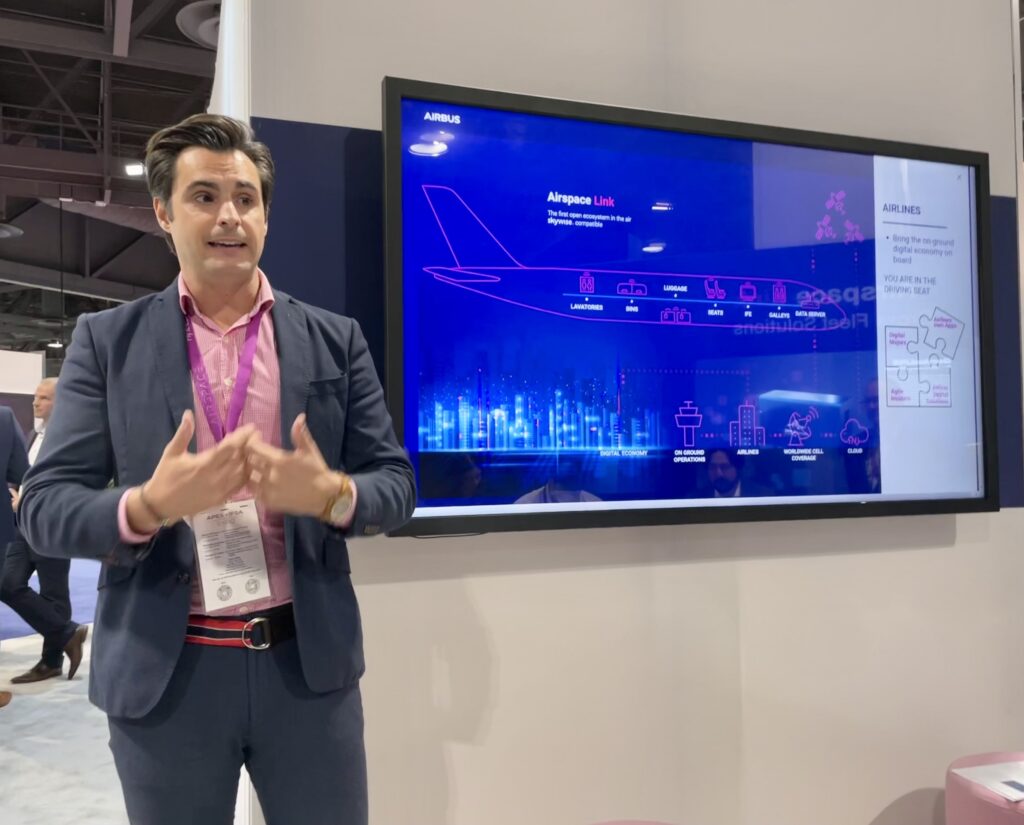
Cedric Carsalade, Aircraft Interiors Marketing Director at Airbus, explained during the media briefing at APEX that Airspace Link provides opportunities for an airline to generate ancillary revenue.
Carsalade noted that airlines will be able to monitor the availability of overhead compartments during the boarding process, which helps with optimization of turnaround times—particularly valuable for short-haul flights. The ecosystem enables predictive maintenance as well. “You can get information about what needs to be done before you arrive at the next destination,” he commented.
The post Airbus Unveils GeniusLINK Ecosystem at APEX appeared first on Avionics International.
—————
Boost Internet Speed–
Free Business Hosting–
Free Email Account–
Dropcatch–
Free Secure Email–
Secure Email–
Cheap VOIP Calls–
Free Hosting–
Boost Inflight Wifi–
Premium Domains–
Free Domains






